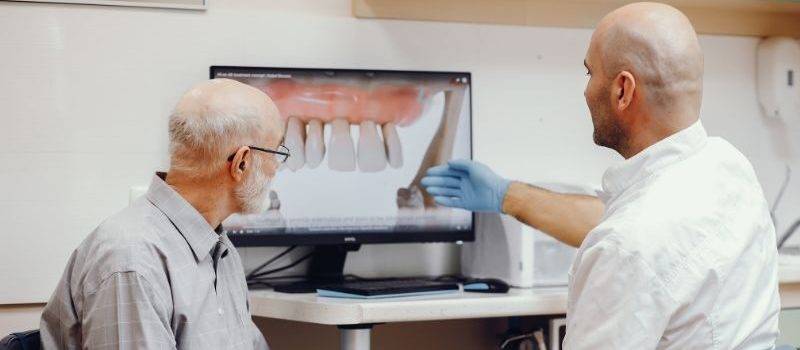
A dental implant is a surgical component that interfaces with the bone of the jaw or skull to support a dental prosthesis such as a crown, bridge, denture, or facial prosthesis or to act as an orthodontic anchor
Your dentist or oral surgeon will first do a comprehensive examination to determine the best to determine the condition of your jawbone and the best dental implant procedure. This initial evaluation includes X-rays, taking impressions, and matching the color of your teeth to make your implant look as natural as possible.
You will determine how many teeth you want to replace with implants, which could take some additional planning with other dental specialists, like periodontists, depending on your oral health condition.
You will also discuss all your medical conditions and medications. Depending on your condition or orthopedic implants, you may need to take antibiotics before the surgery to avoid infection.
If you still have a remaining tooth that needs replacing, your dentist will remove it before the dental work is performed. You can have this done at the same time as the implant insertion.
Your dentist will discuss anesthesia options. Most likely, your dentist will use a local anesthetic of novocaine (or lidocaine) to feel numb and take away any pain. It shouldn’t take long to remove the tooth unless it’s fractured.
You will just feel a little tug and pressure while the tooth is extracted. After you get the extraction, you should avoid blowing your nose, smoking, spitting excessively, or drinking through a straw. These actions can create a dry socket and pain.
There are two types of dental implants : one where the implant is inserted into your jawbone and the other that goes directly under the gumline. Let’s discuss if you have the implant added to your jawbone. If your current jawbone is strong and thick enough, you may not need to get any extra bone added.
Your jaw needs to be strong because there is a lot of pressure when you chew, and you need your bone to be strong to protect that implant. If your jaw needs some extra bone, this bone typically comes from another area of your jawbone away from the implant area.
You may have to let the bone heal first if you have a graft before you can add the implant. Once the bone heals, the dentist or surgeon will add the implant.
After the implant is added to your jawbone, the jawbone will begin to grow around the implant. The implant then becomes part of your natural gum line. This process varies by person and can take anywhere from 3 to 9 months.
Your dentist will discuss anesthesia options. Most likely, your dentist will use a local anesthetic of novocaine (or lidocaine) to feel numb and take away any pain. It shouldn’t take long to remove the tooth unless it’s fractured.
You will just feel a little tug and pressure while the tooth is extracted. After you get the extraction, you should avoid blowing your nose, smoking, spitting excessively, or drinking through a straw. These actions can create a dry socket and pain.
Once your implant is stable enough, the dentist will place an abutment on top of the implant. This piece connects the implant to your crown. The abutment needs to be tightened so it stays in place when you eat.
You will not feel anything during this procedure other than a little pressure. You will get local anesthesia to that area.
Sometimes the abutment can be placed at the same time as the implant since it goes past the gum line. It will be visible, so you will need to discuss how to mask this piece since it will show when you smile. The dentist will add a healing cap to keep the tissue and bone from growing overtop of the abutment.
Your jaw needs to be strong because there is a lot of pressure when you chew, and you need your bone to be strong to protect that implant. If your jaw needs some extra bone, this bone typically comes from another area of your jawbone away from the implant area.
You may have to let the bone heal first if you have a graft before you can add the implant. Once the bone heals, the dentist or surgeon will add the implant.
After the implant is added to your jawbone, the jawbone will begin to grow around the implant. The implant then becomes part of your natural gum line. This process varies by person and can take anywhere from 3 to 9 months.
Your dentist will discuss anesthesia options. Most likely, your dentist will use a local anesthetic of novocaine (or lidocaine) to feel numb and take away any pain. It shouldn’t take long to remove the tooth unless it’s fractured.
You will just feel a little tug and pressure while the tooth is extracted. After you get the extraction, you should avoid blowing your nose, smoking, spitting excessively, or drinking through a straw. These actions can create a dry socket and pain.
After your gums heal, your dentist will make your artificial tooth or crown. You can choose to have a removable implant or permanent. If you are having multiple teeth in the back just like removable dentures, you may want the removable option so you can clean and replace if needed.
You can’t remove a fixed implant to replace or to clean. It is permanently screwed in the abutment or glued down with cement.